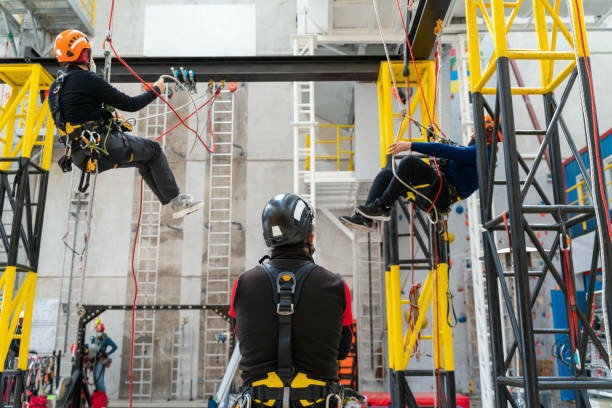


 349,500 Offered Certificates
349,500 Offered Certificates
 24/7 Online Training
24/7 Online Training
 Money Back Guarantee
Money Back Guarantee
 Fully Accredited Courses
Fully Accredited Courses

Created at: 22-02-2025 16:14
Working at heights presents unique challenges and hazards that require adequate safety measures. Proper safety gear is essential to ensure the safety of workers and compliance with relevant regulations. In this guide, we will explore the must-have safety gear for working at heights, how to use it properly, and maintenance tips to ensure long-lasting, reliable protection.
Falls from heights are one of the leading causes of workplace injuries and fatalities. The right safety gear not only reduces the risk of falls but also ensures compliance with safety regulations mandated by various governing bodies. Investing in high-quality gear is crucial for protecting your workforce and reducing liability for employers.
Safety harnesses are critical for fall protection. They are designed to distribute the force of a fall across the body, reducing the risk of injury. When selecting a harness, choose one that meets safety standards and fits correctly.
Lanyards connect the safety harness to an anchor point, providing protection during a fall. There are various types of lanyards including shock-absorbing ones that help reduce the impact of a fall.
Anchor points provide a secure connection for fall arrest systems. They must be capable of supporting the required load and installed correctly.
Protective helmets are essential to prevent injuries from falling objects and impacts. A properly fitted helmet can significantly reduce the risk of head injuries.
Gloves provide grip and protect hands from hazards. Choose gloves that offer protection while also allowing dexterity.
Fall arrest systems typically consist of a combination of harnesses, lanyards, and anchor points. They are designed to stop a fall before the worker reaches the ground.
To ensure your safety gear functions correctly, regular maintenance is necessary:
Familiarize yourself with industry safety regulations that mandate the use of specific protective gear. Compliance ensures not only worker safety but also adherence to laws that may vary by location:
Prioritizing safety by using the right gear when working at heights is crucial for both employees and employers. Regular training, proper use, and maintenance of safety equipment can significantly reduce risks associated with elevated work. Be proactive—ensure that you and your team are equipped to handle challenges safely!
Are you ready to enhance your safety measures? Enroll in our Working at Heights Course and ensure compliance with the latest safety standards. For more information, contact us at [email protected].